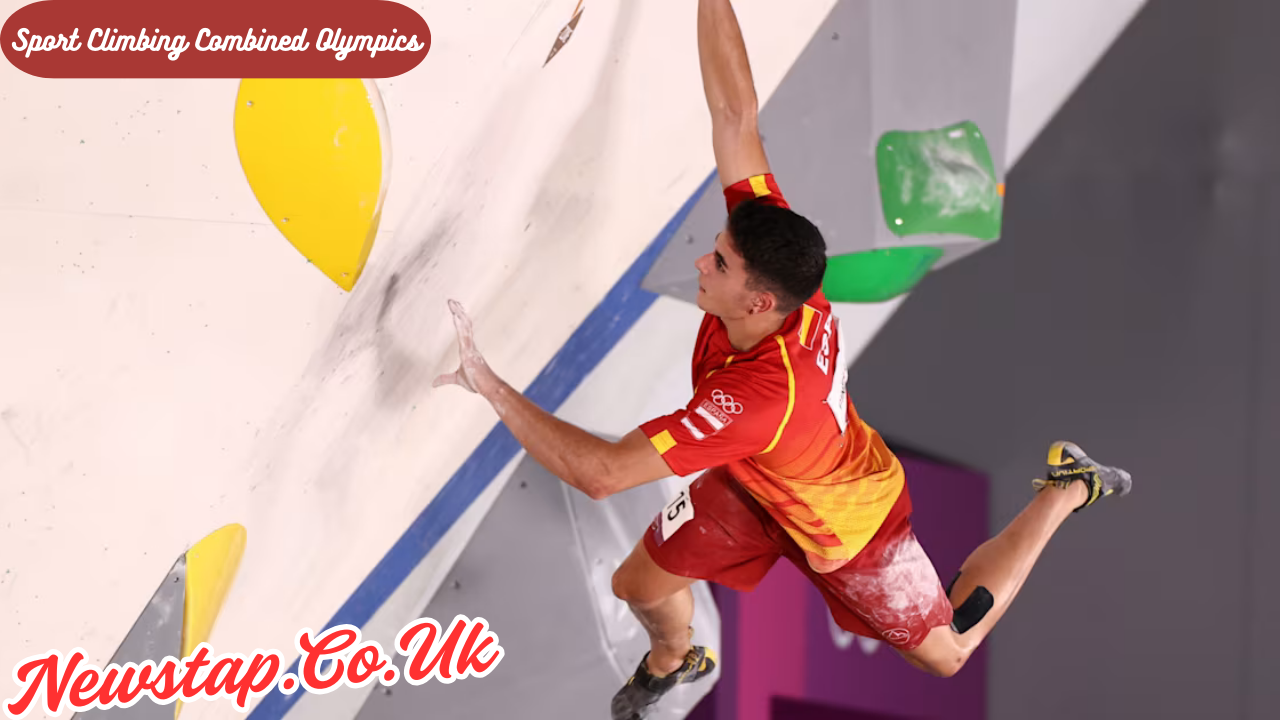Sport climbing made its Olympic debut in the 2020 Summer Olympics in Tokyo, and it has since gained massive attention from athletes and spectators alike. This exciting and physically demanding sport combines three distinct climbing disciplines: lead climbing, bouldering, and speed climbing. The International Federation of Sport Climbing (IFSC) designed the sport climbing format for the Olympics to be a combined event, where athletes would compete in all three disciplines to determine their final ranking. This “Sport Climbing Combined Olympics” format has sparked widespread discussions on the future of climbing in Olympic competition. In this article, we will dive deep into the various aspects of the sport climbing combined format, its impact on athletes, and how it reshapes the future of the sport.
What is Sport Climbing Combined Olympics?
Sport climbing combined Olympics refers to the competition format used in the Olympic Games where climbers compete in three disciplines: lead climbing, bouldering, and speed climbing. Athletes’ performances in these disciplines are combined to produce an overall ranking, rather than having separate medals for each individual discipline. This combined format was introduced at the Tokyo 2020 Summer Olympics to increase the sport’s appeal to a wider audience and to bring a new level of challenge to athletes. It is a dynamic competition that requires a wide range of skills, making it one of the most exciting events for viewers and a true test of versatility for climbers.
The Three Disciplines: Lead, Bouldering, and Speed Climbing
To understand the sport climbing combined Olympics format, it’s crucial to first get familiar with the three core disciplines involved.
Lead Climbing
Lead climbing is one of the most traditional forms of climbing in which athletes must scale a tall, vertical wall with no pre-set holds. The goal is to reach the highest point possible within a set time limit. Climbers use a rope for safety, and they are secured to the wall as they ascend. The difficulty increases as the climber progresses, and the aim is to complete the route or reach as high as possible.
Bouldering
Bouldering is a more dynamic and explosive form of climbing, usually performed on shorter walls without ropes. The focus is on power, agility, and problem-solving skills, as athletes must solve a series of “problems” or routes in a set amount of time. While the walls in bouldering competitions are lower than in lead climbing, the challenges are more intense due to the complexity and difficulty of the moves required.
Speed Climbing
Speed climbing is all about rapidity. Athletes race against each other or the clock to scale a standardized climbing wall as quickly as possible. The speed climbing routes are pre-set and identical for all athletes. This discipline demands a perfect blend of technique, strength, and speed as athletes attempt to break world records in climbing speed.
Combining the Disciplines: The Format of Sport Climbing Combined Olympics
In the sport climbing combined Olympics, the three disciplines—lead climbing, bouldering, and speed climbing—are integrated into one event. The combined format involves each athlete participating in all three disciplines, and their scores are aggregated to determine their overall ranking. The combined score includes both qualitative performance, such as the number of problems solved in bouldering, and quantitative performance, such as the speed at which the athlete completes the speed climbing race.
Each athlete’s performance is ranked for each discipline, and their total score is calculated using a multiplication method. The lower the combined score, the better the ranking. For example, an athlete who finishes first in one event and second in the other two will likely have a strong position, as the combined scores reward consistency across the three disciplines.
The Challenges of the Combined Format
The combined format in the sport climbing Olympics is highly challenging, as athletes must be proficient in all three disciplines. This is a departure from the previous competition formats in which climbers could specialize in just one area. In the combined format, climbers must excel in bouldering’s dynamic challenges, lead climbing’s endurance demands, and speed climbing’s fast-paced races. The level of skill required in each of these disciplines is different, and athletes must balance training across all three, making it an intense preparation process.
Additionally, the combined format puts pressure on climbers to maintain consistency. A climber might excel in one discipline but struggle in another. In the Olympics, where every second counts, a poor performance in one discipline could significantly impact the athlete’s overall ranking, even if they perform well in the other two. As a result, the sport climbing combined Olympics have brought an interesting mix of strategy, performance, and unpredictability to the table.
How the Combined Format Impacts the Sport
The sport climbing combined Olympics format has opened the door for a new generation of climbers who are versatile across all disciplines. This format has inspired climbers to push their limits and become multi-skilled athletes. The intense nature of the combined competition also highlights the diverse range of talents required to be successful in climbing.
Moreover, the combined format also increases the audience’s engagement with the sport. The dynamic shifts between the disciplines keep the competition fresh and exciting, providing fans with plenty of action. The excitement of seeing athletes shift gears from climbing fast in speed climbing to solving complex problems in bouldering and then showing endurance in lead climbing makes the sport climbing combined Olympics a unique event to watch.
The Future of Sport Climbing in the Olympics
The sport climbing combined Olympics format has undoubtedly set the stage for the future of the sport. With climbing’s continued growth in popularity and the inclusion of sport climbing in the Paris 2024 Olympics, the combined event will continue to evolve. As climbing competitions get more technical and athletes get more specialized, we can expect to see further innovations in how these events are structured.
Moreover, there are ongoing discussions about whether the combined format should remain in future Olympic Games or if it would be better to have separate medals for each discipline. While the combined format is incredibly exciting, it might be difficult to maintain for long-term Olympic success. Some argue that having separate medals for bouldering, lead climbing, and speed climbing would allow climbers to showcase their expertise in specific areas. However, for now, the sport climbing combined Olympics format has proven to be a thrilling addition to the Olympic roster, attracting a whole new generation of fans.
Conclusion: A New Chapter in Competitive Climbing
The sport climbing combined Olympics has brought a new level of excitement and challenge to Olympic competition. The introduction of this format, which combines the disciplines of lead climbing, bouldering, and speed climbing, has not only tested the versatility of athletes but has also elevated the visibility of climbing as a whole. As we look forward to future Olympics, sport climbing will undoubtedly continue to grow, and the combined event will remain a key feature in showcasing the athleticism, determination, and skill of the world’s best climbers.
Sport climbing combined Olympics is a testament to how the sport is evolving and how athletes are pushing their boundaries to achieve greatness. The format’s unique approach promises to keep spectators on the edge of their seats, while encouraging climbers to develop well-rounded skills that make them versatile athletes. With each Olympics, we get a little closer to understanding the future of competitive climbing, and the combined event is sure to play a major role in that future.
Also Read: Everton F.C. Games: A Legacy of Passion and Rivalries



